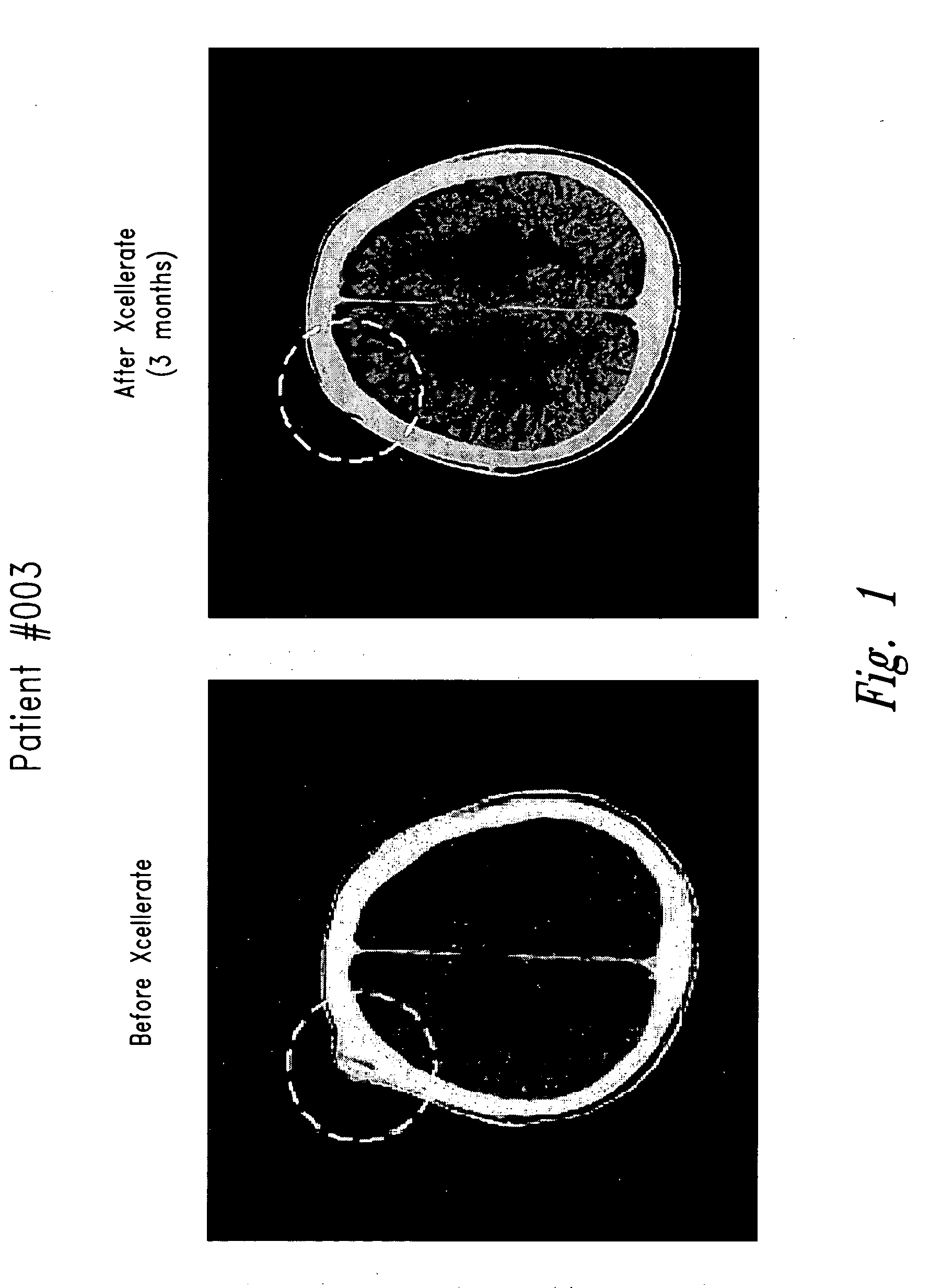T cell therapy for the treatment of cachexia and chronic diseases
a cachexia and chronic disease technology, applied in the field of t cells, can solve the problems of increased total glucose turnover rate, no consistent relationship between the development of cachexia and tumor size, disease stage, type or duration of the malignancy, etc., and achieve the effects of reducing serum levels, increasing energy level, and increasing body weigh
- Summary
- Abstract
- Description
- Claims
- Application Information
AI Technical Summary
Benefits of technology
Problems solved by technology
Method used
Image
Examples
example 1
An Animal Modem for Wound Healing
[0136] An animal model of superficial (skin) wounds is examined to study the affect of the compositions of the present invention on wound repair and healing.
[0137] Split thickness skin wounds, approximately 2×2 cm are made over the back of anesthetized swine according to the method described by Staiano-Coico et al. J Clin Invest. 77(2):396-404-(1986). The pig model is commonly used in such studies as pig skin is most like human skin. A small amount of solution comprising the composition of the present invention is placed onto about 11 wounds and an occlusive adhesive dressing is used to cover the wounds. A placebo solution (saline, 50 to 100 .mu.l) is placed onto each of 11 “mirror”, identical wounds which are also covered with occlusive dressing. After 3 days, the animals are anesthetized, sacrificed and full thickness skin samples twice as large as the original skin wound they contained are removed. The samples are coded to blind the treatment re...
example 2
An Animal Model for Myocardial Ischemia
[0138] Important prerequisites for successful studies on tissue repair and regeneration using the T cell or supernatants therefrom of the present invention are (a) constitution of an animal model which is applicable to clinical myocardial ischemia which can provide useful data regarding mechanisms for angiogenesis in the setting of myocardial ischemia, and (b) accurate evaluation of the effects of the compositions described herein. A porcine model of myocardial ischemia that mimics clinical coronary artery disease is used, as described in U.S. Pat. No. 6,174,871, hereby incorporated in its entirety. Placement of an ameroid constrictor around the left circumflex (LCx) coronary artery results in gradual complete closure (within 7 days of placement) with minimal infarction (1% of the left ventricle, 4.+−0.1% of the LCx bed) (Roth et al Circulation 82:1778, 1990; Roth et al. Am J Physiol 235:H1279, 1987; White et al. Circ Res 71: 1490, 1992, Hammo...
example 3
Repair of Osteoblastic and Lytic Bone Lesions in Two Patients Receiving Activated T Cell (Xcellerate™)+IL-2 Therapy
[0142] Three patients were entered on a Phase I metastatic renal cell carcinoma trial (XT00) and were receiving treatment with activated T cells (XCELLERATE™)+IL-2 therapy. One patient (Patient #003) had an osteoblastic lesion in his skull that completely resolved after treatment with the XCELLERATE™+IL-2 therapy (FIG. 1, circled region). A second patient (Patient #004) had a large 7 centimeter lytic lesion in his pelvis and a second lytic lesion in his rib. After treatment with XCELLERATE™+IL-2, both bone lesions healed completely and remained healed as of the 10 month follow-up visit (FIG. 2, circled region).
PUM
| Property | Measurement | Unit |
|---|---|---|
| mean diameter | aaaaa | aaaaa |
| mean diameter | aaaaa | aaaaa |
| diameter | aaaaa | aaaaa |
Abstract
Description
Claims
Application Information
 Login to View More
Login to View More - R&D
- Intellectual Property
- Life Sciences
- Materials
- Tech Scout
- Unparalleled Data Quality
- Higher Quality Content
- 60% Fewer Hallucinations
Browse by: Latest US Patents, China's latest patents, Technical Efficacy Thesaurus, Application Domain, Technology Topic, Popular Technical Reports.
© 2025 PatSnap. All rights reserved.Legal|Privacy policy|Modern Slavery Act Transparency Statement|Sitemap|About US| Contact US: help@patsnap.com


